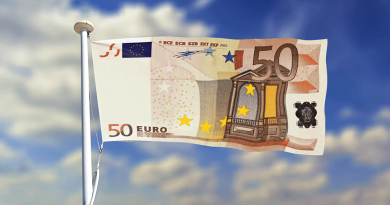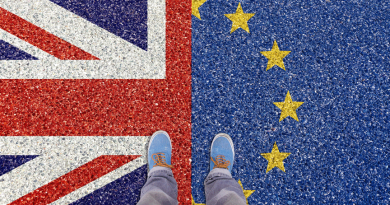The struggle against hesitation
Simone Tagliapietra is a Senior Fellow at Bruegel
European Commission President Ursula von der Leyen on 10 September 2025 gave her fifth state of the union speech to the European Parliament. Previously, she held out the promise of a ‘geopolitical Commission’, or a stronger Europe in the world, though for much of her tenure, this idea has remained more theory than practice. This year’s speech, however, shifted notably in tone: she asked if Europe has the stomach for a fight.
Von der Leyen portrayed Europe as engaged in an unprecedented struggle for independence, values and democracy in a world shaped by the re-emergence of imperial ambitions. She had strong words about the wars in Gaza and Ukraine, and on domestic front she gave particular attention to pressing issues for citizens, including the housing crisis and the rising cost of living.
She is right that Europe is in a fight. But to prevail, words must be rapidly matched by tangible instruments and a strong political will, at both national and European Union levels, to use them. This is far from the case today.
EU governments remain hesitant to embrace deeper integration, and the European Parliament is more polarised than ever, even within the majority that supports the President. Von der Leyen herself, despite the bold framing, still often falls back on the lowest common denominator among EU countries, rather than pressing for a more decisive EU strategy.
Nowhere is this tension clearer than on competitiveness. Von der Leyen is right to say that Europe’s independence depends on its ability to compete, and that the continent must invest massively in digital and clean technologies. She is equally right to call for Europe to be faster, smarter and more European. Yet the record so far is thin.
Europe’s problem is not an absence of ideas. It is the gap between rhetoric and delivery
The Clean Industrial Deal competitiveness and decarbonisation plan, proposed in February 2025, serves as a prime example of this. Conceived as means of fostering clean-tech investment and slashing energy costs, it largely remains a concept. The Commission has produced compasses, communications and dialogues, but tangible impacts are so far minimal.
The notable exception has been the revision of state-aid guidelines to allow more national subsidies for clean-tech manufacturing and established, energy-intensive industries. But this can encourage fragmentation, risking subsidy races among member states without addressing structural weaknesses.
It is now time to push the Clean Industrial Deal into its implementation phase. An ideal place to start would be putting in place the promised Industrial Decarbonisation Bank, fostering lead markets for clean innovative technologies with a smarter use of public procurement, and developing much-needed clean trade and investment partnerships with selected third countries. These initiatives should move forward as quickly as possible.
Specific announcements made by President von der Leyen during her speech, such as a €1.8 billion pledge to support battery production in the EU, fall short of being game changers. Chinese manufacturer CATL, in a joint venture with Stellantis, is investing more than twice that sum in a single gigafactory in Spain. The collapse in late 2024 of publicly-backed Northvolt, once Europe’s flagship battery start-up, illustrates that money alone is not enough.
Structural weaknesses persist: reliance on foreign inputs, the challenges of scaling up production and fierce Asian competition. Von der Leyen failed to address them when she avoided a pressing question: how should Europe handle the wave of Chinese investment in its electric-vehicle and battery supply chains?
Her proposal to add ‘made in Europe’ criteria in public procurement also raises concerns. It has a protectionist flavour and sits uneasily with Europe’s continued talk of open trade. More fundamentally, it risks turning the Clean Industrial Deal into an attempted reshoring exercise, rather than a strategic framework that to build on Europe’s comparative advantages while keeping the doors open to global trade open.
The same ambivalence runs through her energy message. Von der Leyen declared that Europe is on the path to energy independence. But this jars with the EU-US energy deal, under which the EU has committed to around €700 billion up to 2028 in American liquified natural gas (LNG), oil and nuclear fuel purchases.
The US already accounts for 55% of EU LNG imports; replacing Russian LNG entirely with American supplies, instead of with a more diversified portfolio, would push that figure close to 70%. This is far from the concept of independence, or at least of supply diversification, and risks exacerbating structural weaknesses, not solving them.
Europe’s problem is not an absence of ideas. It is the gap between rhetoric and delivery. The EU has shown it can act decisively in emergencies, as with COVID-19 vaccines and the energy crisis triggered by Russia’s invasion of Ukraine. But in normal times, it hesitates. This is the true danger Europe must fight against.
This article is based on a Bruegel First Glance.




